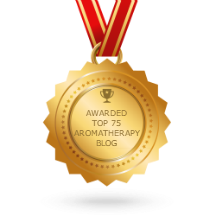For today’s entry of Australian Essential
Oils, I share one that I have grown very fond of. After
reading Bush Sense, I immediately ordered this take- no- prisoners
oil. My sinuses have been miserable this
year, to the extent that I finally went to a specialist to find out what
exactly I was allergic to. With Mark’s
guidance, I was able to decrease the horrid pressure and breath like a normal
person once again. Without
desensitization therapy or major expense of reverse airflow, I will never be
totally free of my allergy – dust mites, for Heaven’s Sake!! So this oil is not something I will be
without, prepared for flare ups.
Leptospermum petersonii F.M. Bail. Lemon Scented Tea tree, or Citratum. A shrub with bright green, narrow, oval-
shapedleaves with a strong lemon or citronella scent, depending on the
chemotype. In the summers of Australia,
this bush produces white or pale pink flowers.
Steam distraction of leaves and small stems is used to produce this
wonderful oil. (1)
 |
| Photo Courtesy of the Paperbark Company |
Per Mr. Webb’s research, the Major Chemical
Constituents in a typical analysis of the oil are:
Constituent Average %
Range %
Geranial
24
22-30
Nerol 29
23-37
Geraniol
2.8
Citronellal
21 9-28
Citronellol
0.46
Previously,
Leptospermum petersonii was referred to as Letospermum citratum. Discovered in 1918 by challinor et al, it was
described as having a “pleasant lemon-scented odour.” Rich in citronellal, neral and geranial,
this is as one would expect. Commercial
plantations now produce this oil in abundance.
(1)
In Australia, the Lemon Scented Tea Tree has
been found to be anti-infectious, anti-viral, antiseptic, expectorant,
anti-inflammatory, and a digestive stimulant.
Used alone or in combination, it is a natural insect repellent. Web notes that in small quantities, the oil
is stimulating, but at normal strength, sedating and calming. As well, it is used in the treatment of oily
skin and acne. In a blend, it aids in
relieving mucous lining inflammation, relieving respiratory issues. (1)
Robert Tisserand warns of congenital
malformations and skin sensitization with this, and with all high citral oils. As
well, he cautions use in combination with some drugs, especially diabetic
medication, due to cardiovascular effects, as well as damaged skin, pregnancy,
and children under the age of 2. In
addition, he advices a dermal maximum of 0.8%.
IFRA recommends a dermal limit for citral of 0.6% for body oils and
lotions in order to avoid skin sensitization.
(2)
I had a difficult time identifying the
scent. Yes, Lemon, but… My friend Li Wong asked if I’d ever smelled
Murphy’s Oil Soap. THAT is spot on to
what this oil smells like. I
appreciate this oil in my aromastone when I'm feeling stuffed up.
References:
(1) Mark Webb.
Bush Sense, Australian Essential
Oils and Aromatic Compounds, Adelaide,
Australia: Griffin Press, 2000.
(2) Robert
Tisserand/Rodney Young. Second Edition,
Essential Oil Safety: Churchill
Livingstone, 2013.
(Marge's comments)
(Marge's comments)
Years ago, Dennis Archer, who first introduced me to many of the Australian oils we have made available over the years taught me the most effective use for this new (to me) essential oil - it appears to be the BEST mosquito repellent we have encountered. It is the secret of our SkeeterBeater suite of products, apparently effective against mosquitoes, flys, fleas, and, in Africa, against the Tsetse fly. When the government approved Lemon Eucalyptus (Eucalyptus citriodora) as an "approved" insect repellent, we experimented one year. We replaced 50% of the Lemon Teatree oil in our formula with Lemon Eucalyptus. Our clients were not happy. The new formula was less effective. Please be forewarned it is NOT a tick repellent. But for mosquitoes, flies, and tsetse flies (if you are going on Safari), it's amazing.
You may read more about, and order your own Lemon Tea Tree oil here.



1 comment:
Yes! Absolutely smells like Murphy's oil soap. I thought the same thing.
Post a Comment